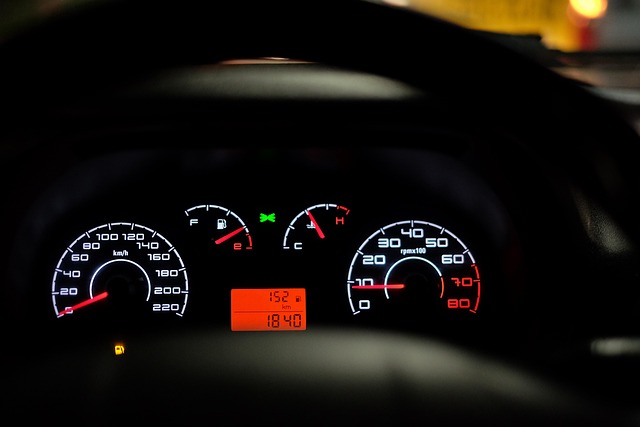Looking to register your car in California? This comprehensive guide breaks down the process step-by-step. First, understand the eligibility criteria for vehicle registration in the Golden State. Next, gather essential documents including proof of ownership and insurance. Master the crucial DMV VIN verification process, ensuring a smooth transition. Fill out application forms accurately and pay the required fees to finalize your California car registration. Optimize your experience with our detailed instructions on dmv vin verification.
- Understand Eligibility for Car Registration in California
- Gather Required Documents for Vehicle Registration
- Perform DMV VIN Verification Step-by-Step
- Complete Application Forms for Car Registration
- Pay California Car Registration Fees and Submit
Understand Eligibility for Car Registration in California

Before you can register your car in California, it’s essential to understand the eligibility requirements. The California Department of Motor Vehicles (DMV) has specific guidelines that must be met before a vehicle can obtain registration and a license plate. One crucial step is ensuring the car has a valid Vehicle Identification Number (VIN) inspection report. This process, often conducted through a mobile vin verifier, checks for any discrepancies or reported issues with the VIN, which is a unique identifier for your vehicle.
A mobile vin inspection service can be particularly useful as it allows you to verify the vehicle’s history conveniently and efficiently. By using these services, you’ll have peace of mind knowing that your car is safe and legal to register, eliminating any potential delays or complications at the DMV.
Gather Required Documents for Vehicle Registration

Before you begin the registration process, ensure you have all the necessary documents ready. The California Department of Motor Vehicles (DMV) requires specific paperwork for vehicle registration, including a unique identifier called a Vehicle Identification Number (VIN). This number is crucial for verifying the vehicle’s history and ensuring it complies with safety standards. One efficient way to obtain this verification is through a mobile vin verifier or a vin inspection service that can provide you with accurate and immediate results.
Gathering these documents beforehand saves time during the registration process. Essential papers include your vehicle’s title, proof of insurance, a valid driver’s license, and perhaps the most critical, the VIN from your car’s registration certificate or the label located on the vehicle itself. A mobile vin inspection can help you quickly and conveniently retrieve this information if it’s not readily available.
Perform DMV VIN Verification Step-by-Step

Performing a DMV VIN (Vehicle Identification Number) verification is a crucial step when registering your car in California. This process ensures that your vehicle meets all legal requirements before hitting the road. Here’s how to do it step-by-step:
1. Gather Necessary Documents: Before heading to the DMV, make sure you have all required paperwork ready, including your car’s title, registration documents (if applicable), proof of insurance, and valid driver’s license. For a mobile VIN inspection or verification, download the appropriate app from the DMV or use an online tool that allows you to input your VIN and access detailed vehicle history information.
2. Visit Your Local DMV Office: Once armed with your documents, visit your nearest California DMV office. A staff member will guide you through the process. They will verify your identity, inspect your car’s registration papers, and check the vehicle’s history using its unique VIN number. If everything checks out, they’ll proceed to the next step, which typically involves a brief inspection of your car. This inspection ensures that your vehicle meets safety standards and emissions requirements.
Complete Application Forms for Car Registration

To register your car in California, you’ll need to complete and submit the necessary application forms. The first step involves gathering important documents like your vehicle’s registration certificate from the previous state, proof of insurance, and a valid driver’s license. Once you have these ready, obtain Form REG 137 (Application for Registration and Title) from the California Department of Motor Vehicles (DMV).
Fill out the form accurately, providing all the required information such as your personal details, vehicle description, and ensuring that the Vehicle Identification Number (VIN) is correctly noted. For added convenience and accuracy, many people opt for a mobile VIN inspection or use a mobile VIN verifier to cross-reference the data against the DMV’s records. After completing the form, submit it along with the required fees at your local DMV office, where they’ll perform a VIN verification to ensure your vehicle’s authenticity.
Pay California Car Registration Fees and Submit

After completing your California car registration application, it’s time to pay the required fees and submit your documents. The California Department of Motor Vehicles (DMV) will review your application and perform a vin inspection to verify the vehicle’s identity using its unique Vehicle Identification Number (VIN). Ensure you’ve arranged for this crucial vin verification process, which can often be completed at a certified repair shop or through a mobile vin verifier.
Once your VIN is confirmed, you’ll need to pay the registration fees, which vary based on your vehicle’s type and age. You can typically submit your application and make the payment online or in-person at a local DMV office. Remember to keep all necessary documents, including proof of fee payment, as you may need them for future reference or when renewing your car registration.
Registering a car in California involves understanding eligibility requirements, gathering essential documents, and completing straightforward steps like DMV VIN verification. By meticulously following these procedures and ensuring all forms are accurately filled out, you can successfully register your vehicle and hit the road legally. Remember, proper registration not only ensures compliance with state laws but also provides proof of ownership and access to key services for your peace of mind.



